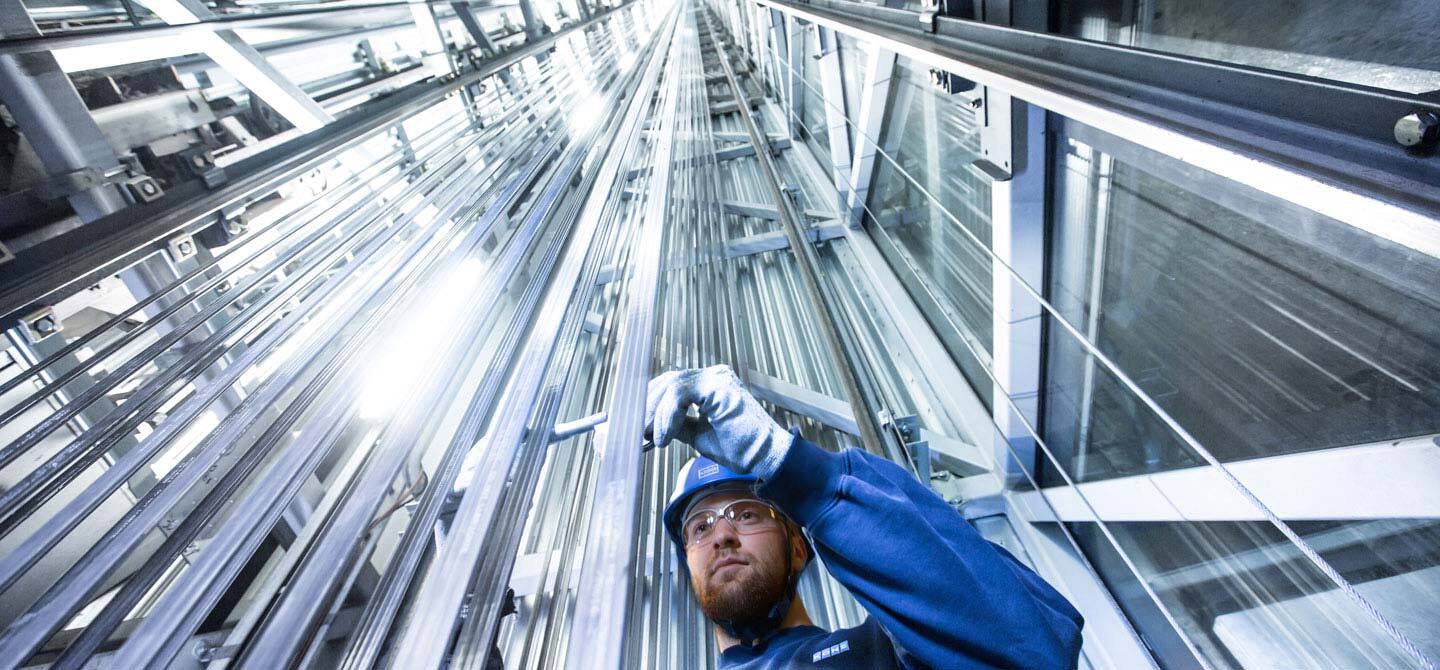Welcome to KONE’s high-rise laboratory. Located in the depths of a mine, this facility is where the world’s tallest elevators are tested.
While this laboratory has been operational for over 20 years, KONE has recently revamped the facility to expand its testing capabilities.
The Tytyri facility is now home to 11 test shafts with a combined length of approximately 1.6 kilometers or one mile. What makes this laboratory one of its kind in the world is the fact that here elevators can travel over 300 meters of travel height, with the deepest point of the shaft lying 350 meters below the ground.
“For KONE it is very crucial to develop and test the next generation elevator technologies at Tytyri,” says Sascha Brozek, Senior Vice President, KONE Major Projects Unit.
But why is travel distance such a big deal in high-rise elevator testing? Well, because all the phases (acceleration, travel speed, and deceleration) that take place during elevator travel must be tested. This would not be possible in short shafts. To reach a high travel speed, the elevator shaft must have a long travel distance. With the length of the test shafts at Tytyri, elevators can conveniently reach speeds of 19 meters per second. This allows for a range of tests to be conducted in real-world conditions.
EXTREME MACHINES, EXTREME PERFORMANCE
Take the case of KONE’s innovative free-fall test. It is used to test the safety gears that are located at the bottom, top, or at all four corners of the car frame, depending on the elevator’s load and speed. If the electronics detect that the car is speeding downward, it jams a metal wedge into a channel in the guide rails along which the elevator travels. Friction builds between the wedge and the rail, bringing the car to a stop at a comfortable rate.
To test this functionality, an elevator frame of 10,000 kilograms is dropped into a shaft of close to 200 meters at speeds of up to 26 meters per second to see if its safety equipment can stop it successfully. That’s the equivalent of putting the brakes on a car travelling at a speed of 90 kilometers per hour, and hoping that it stops before it hits the wall. In Tytyri, Finland, the system can be tested in ways that no one else can – pushing it to extremes.
“Quality performance and safety are KONE’s top priorities and we make sure every new technology is tested under extreme conditions,” says Brozek.
Other features tested at the facility include ride comfort, acceleration, deceleration and braking tests, mileage and speed tests.
WHERE HI-TECH MEETS REAL-WORLD APPLICATIONS
This facility is also where KONE tests its ground-breaking technology – KONE UltraRope®, the super-light composite cable that eliminates the disadvantages of existing steel ropes enabling future elevator travel to heights of up to 1,000 meters. This amazing technology is put through its paces here to ensure that it can endure environmental effects and friction.
“New innovations like KONE’s high speed elevators or KONE UltraRope® were validated here and our customers using the technology - Jeddah Tower, CITIC Tower or Marina Bay Sands to name a few – visited Tytyri and were able to see the technologies in real operation,” adds Brozek.
Clearly, KONE is shaping the future of high-rises across geographies. And the irony is not lost on anyone that these innovative high-rise technologies come from a country with no high-rises. With its innovative technologies and remote-monitoring systems, KONE is scaling new vertical boundaries.
